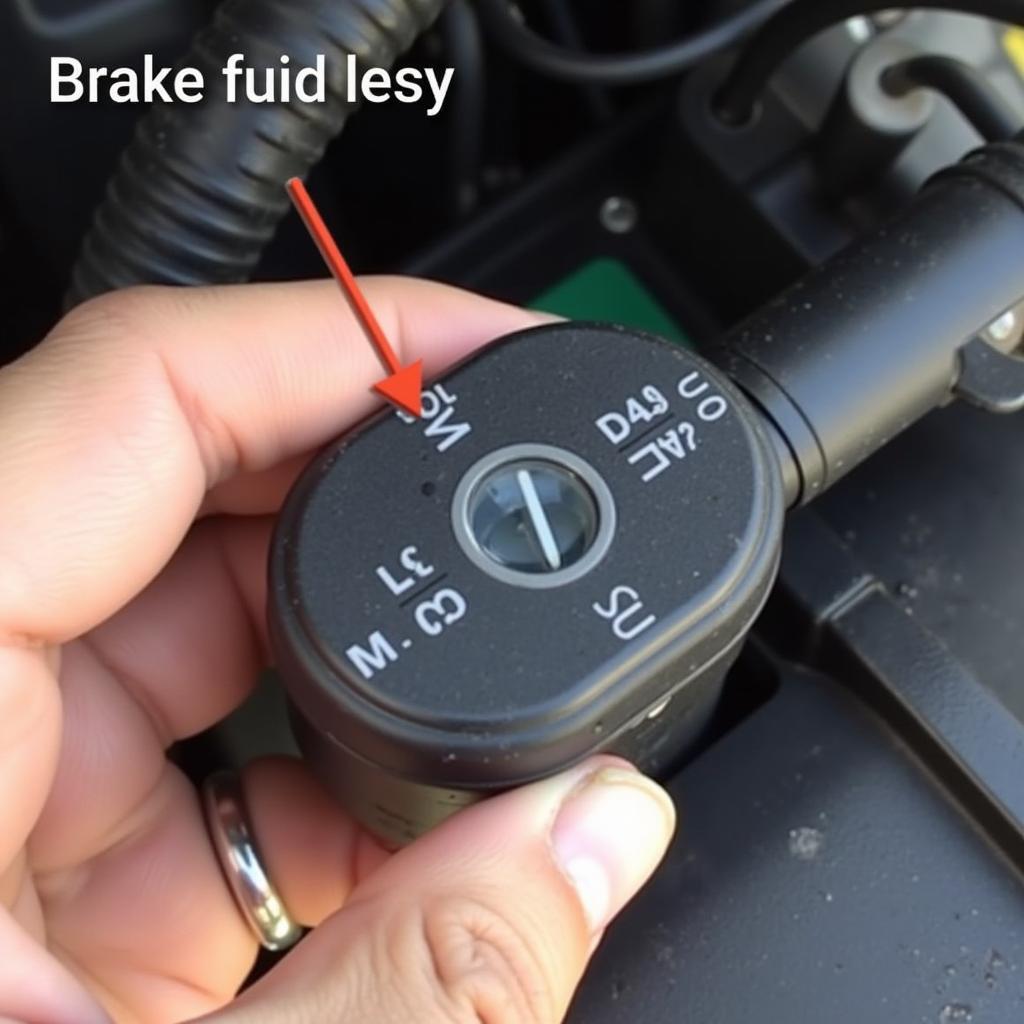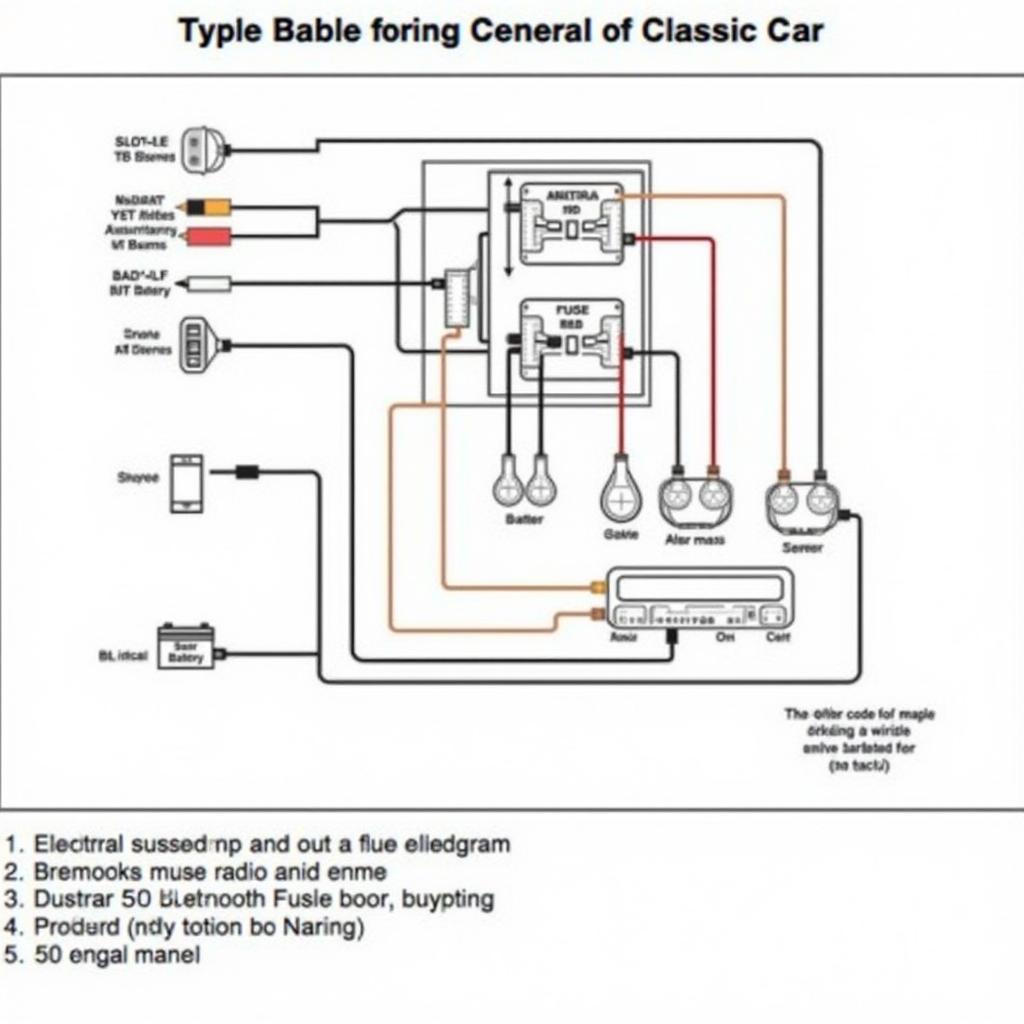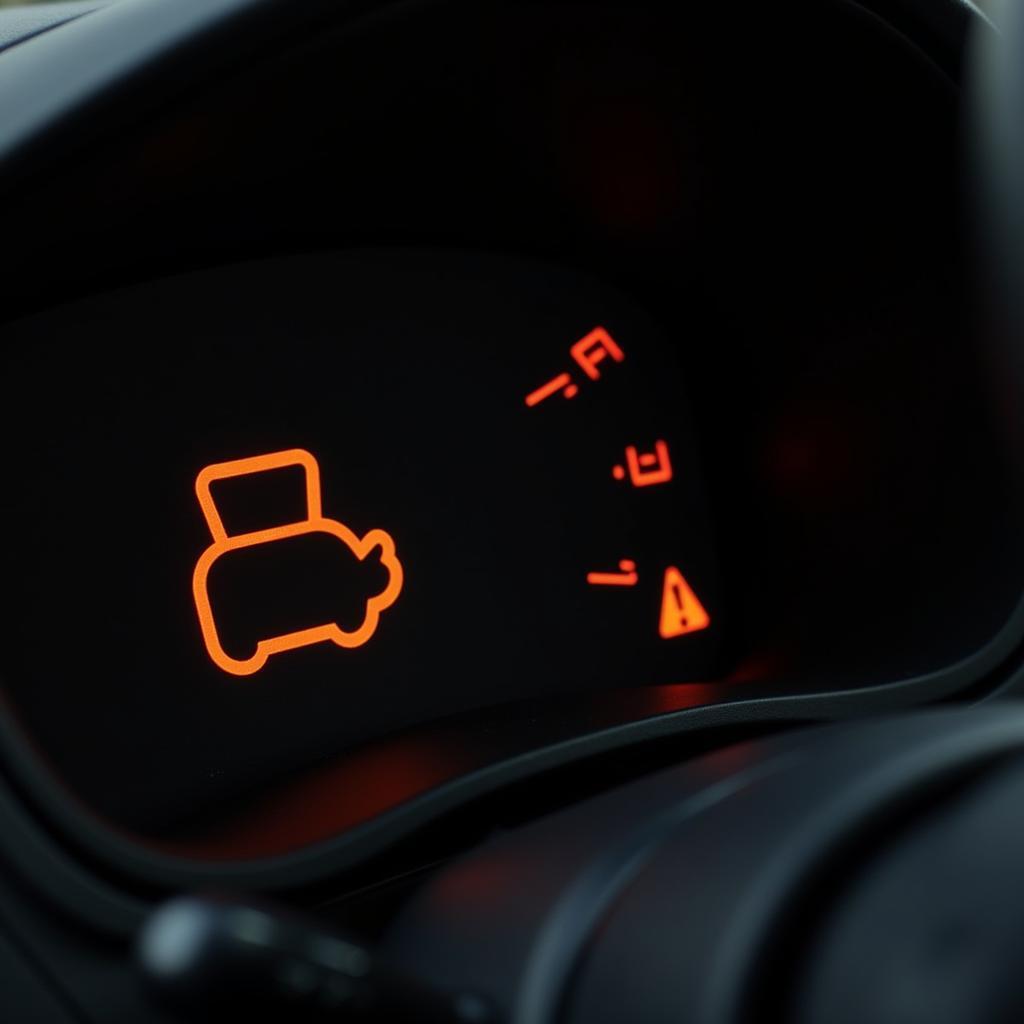If your brake warning light stays on, it’s a clear signal that something isn’t right with your braking system. Addressing this issue promptly is crucial for your safety and the longevity of your vehicle. This comprehensive guide will delve into the common causes, diagnostic procedures, and solutions for a persistent brake warning light.
One common reason for the brake warning light to stay on is low brake fluid. This can be due to a leak in the brake lines, worn brake pads, or a faulty master cylinder. Checking your brake fluid level is the first step in diagnosing the problem. If the level is low, adding more fluid might temporarily solve the issue, but it’s crucial to find and fix the underlying cause of the fluid loss. Ignoring a low brake fluid warning can lead to brake failure, putting you and others at risk. You can find more information about brake warning light issues on specific car models like the Nissan Altima brake warning light stays on.
Why is My Brake Warning Light On?
There are several reasons why your brake warning light might remain illuminated. Identifying the root cause is vital for effective repair.
Common Causes of a Persistent Brake Warning Light
- Low Brake Fluid: This is the most common culprit. A leak in the system, worn brake pads, or a malfunctioning master cylinder can deplete brake fluid levels.
- Faulty Brake Sensor: Modern vehicles have sensors that monitor brake pad wear. A faulty sensor can trigger the warning light even if the pads are fine.
- Parking Brake Engaged: Sometimes, the simplest explanation is the correct one. Ensure your parking brake is fully released.
- ABS Issue: A problem with the Anti-lock Braking System (ABS) can activate the brake warning light. This usually requires professional diagnostics.
- Faulty Master Cylinder: The master cylinder is the heart of the braking system. A leak or internal failure can cause the warning light to illuminate.
 Checking Brake Fluid Level in Car
Checking Brake Fluid Level in Car
What if your classic car has a brake light issue? Resources are available for older models, such as the information on the 1967 Mustang brake warning light stays on.
Diagnosing the Problem
Diagnosing the issue accurately is the first step towards a solution. Start with the simple checks before moving to more complex procedures.
Simple Checks You Can Do at Home
- Check the Parking Brake: Make sure the parking brake is fully disengaged.
- Inspect Brake Fluid Level: Open the hood and locate the brake fluid reservoir. Check the fluid level against the minimum and maximum markings.
- Visual Inspection of Brake Lines: Look for any signs of leaks or damage in the brake lines.
When to Seek Professional Help
If the simple checks don’t reveal the problem, it’s time to consult a professional. They have the expertise and specialized equipment to diagnose more complex issues, such as ABS problems or a faulty master cylinder.
“A thorough diagnostic scan can pinpoint the exact cause of the brake warning light, saving you time and money in the long run,” says John Smith, Automotive Diagnostics Specialist at Smith Auto Repair.
Solutions and Repairs
Depending on the diagnosis, the solution can range from simple DIY fixes to more complex repairs requiring professional assistance.
DIY Fixes for Simple Issues
- Adding Brake Fluid: If the brake fluid level is low, add the correct type of brake fluid to the reservoir. However, this is a temporary fix. You must still find the underlying cause of the fluid loss.
- Releasing the Parking Brake: If the parking brake is engaged, release it fully.
Professional Repairs for Complex Issues
- Brake Pad Replacement: Worn brake pads require professional replacement.
- Brake Line Repair or Replacement: Leaking or damaged brake lines need to be repaired or replaced by a qualified mechanic.
- Master Cylinder Repair or Replacement: A faulty master cylinder requires professional repair or replacement.
- ABS Repair: ABS issues require specialized diagnostic equipment and expertise. Consult a qualified technician for ABS repairs. For specific models, you can find resources like troubleshooting for the Honda Accord brake warning light stays on.
“Never ignore a persistent brake warning light,” advises Jane Doe, Lead Mechanic at Doe’s Auto Shop. “Addressing the issue promptly can prevent costly repairs and ensure your safety on the road.” Problems with air brakes can be especially serious, so if you’re experiencing an air brake warning light stays on, address it immediately. For specific vehicle models, you might find resources like the guide for a 2006 F150 brake warning light stays on.
Conclusion
A brake warning light that stays on is a serious issue that should never be ignored. By understanding the potential causes and taking the appropriate steps for diagnosis and repair, you can ensure the safety and reliability of your vehicle’s braking system. Remember to consult a professional if you’re unsure about any aspect of the diagnosis or repair process.



